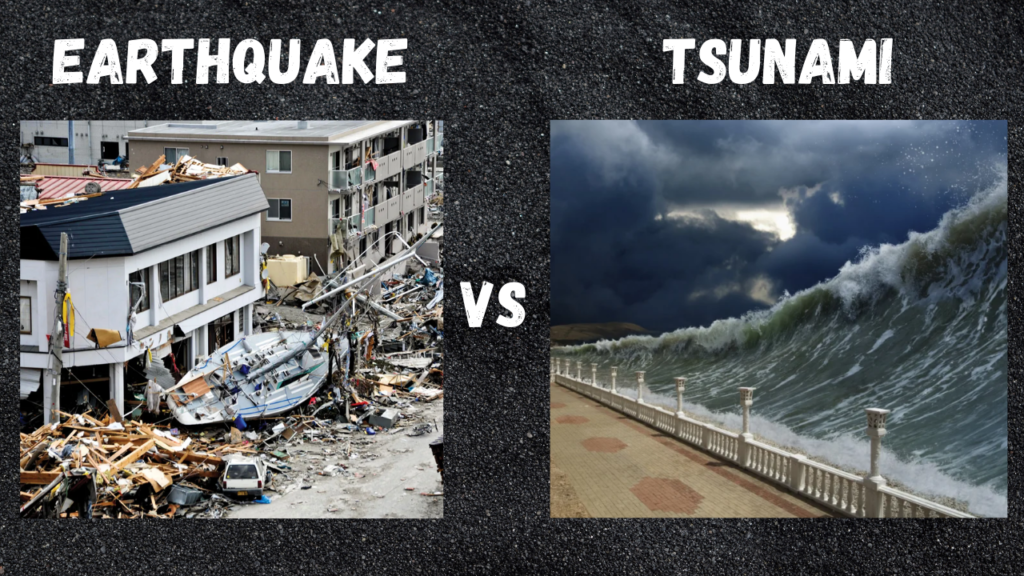Earthquakes and tsunamis are natural phenomena that result from the dynamic forces within the Earth’s crust and oceans. While they are distinct events, they are often interconnected due to their shared origin in the Earth’s geophysical processes.
What is an Earthquake?
An earthquake is a sudden and violent shaking of the ground, typically caused by movements along faults in the Earth’s crust. The Earth’s crust is divided into tectonic plates that constantly interact with each other. When these plates grind against one another or collide, stress builds up until it is released in the form of seismic energy. This release of energy creates seismic waves that travel through the Earth, causing the ground to shake.

Key Characteristics of Earthquakes:
- Epicenter: The point on the Earth’s surface directly above the earthquake’s origin is known as the epicenter.
- Magnitude: Earthquakes are measured on the Richter scale, which quantifies the amount of energy released during an earthquake. The higher the magnitude, the more significant the earthquake.
- Aftershocks: Following a major earthquake, smaller tremors called aftershocks may occur as the Earth adjusts to the new stress distribution.
What is a Tsunami?
A tsunami, on the other hand, is a series of ocean waves with extremely long wavelengths and high energy, often triggered by underwater earthquakes, volcanic eruptions, or landslides. While earthquakes are the primary cause of tsunamis, not all earthquakes lead to the generation of these massive sea waves. Related: Difference Between Environment and Ecosystem
Key Characteristics of Tsunamis:
- Generation: Tsunamis are commonly generated when an earthquake occurs beneath the ocean floor, causing the displacement of water. The energy released during the earthquake is transferred to the water, creating a series of waves.
- Speed: Tsunamis can travel across the open ocean at speeds exceeding 500 miles per hour (800 kilometers per hour), making them difficult to detect and giving coastal communities limited time to prepare.
- Wave Height: Although tsunamis have long wavelengths, they may not be noticeable in deep water. However, as they approach shallow coastal areas, the waves can grow to great heights, causing widespread devastation.
Difference Between Earthquake and Tsunami:
- Cause: Earthquakes are caused by the movement of tectonic plates beneath the Earth’s surface, while tsunamis are triggered by underwater disturbances, such as earthquakes, volcanic eruptions, or landslides.
- Nature: An earthquake is a seismic event that results in ground shaking, while a tsunami is a series of ocean waves that can be devastating when they reach coastal areas.
- Location: Earthquakes can occur anywhere on Earth, but tsunamis are most common in the Pacific Ocean’s “Ring of Fire,” where tectonic plate boundaries are highly active.
Conclusion
In summary, earthquakes and tsunamis are natural occurrences driven by the Earth’s dynamic processes. Understanding the causes and characteristics of these events is crucial for mitigating their impact and ensuring the safety of vulnerable coastal communities. While earthquakes and tsunamis are distinct, their interconnectedness highlights the complexity of Earth’s geophysical systems. Advances in technology and early warning systems continue to play a crucial role in minimizing the potential devastation caused by these natural phenomena.

